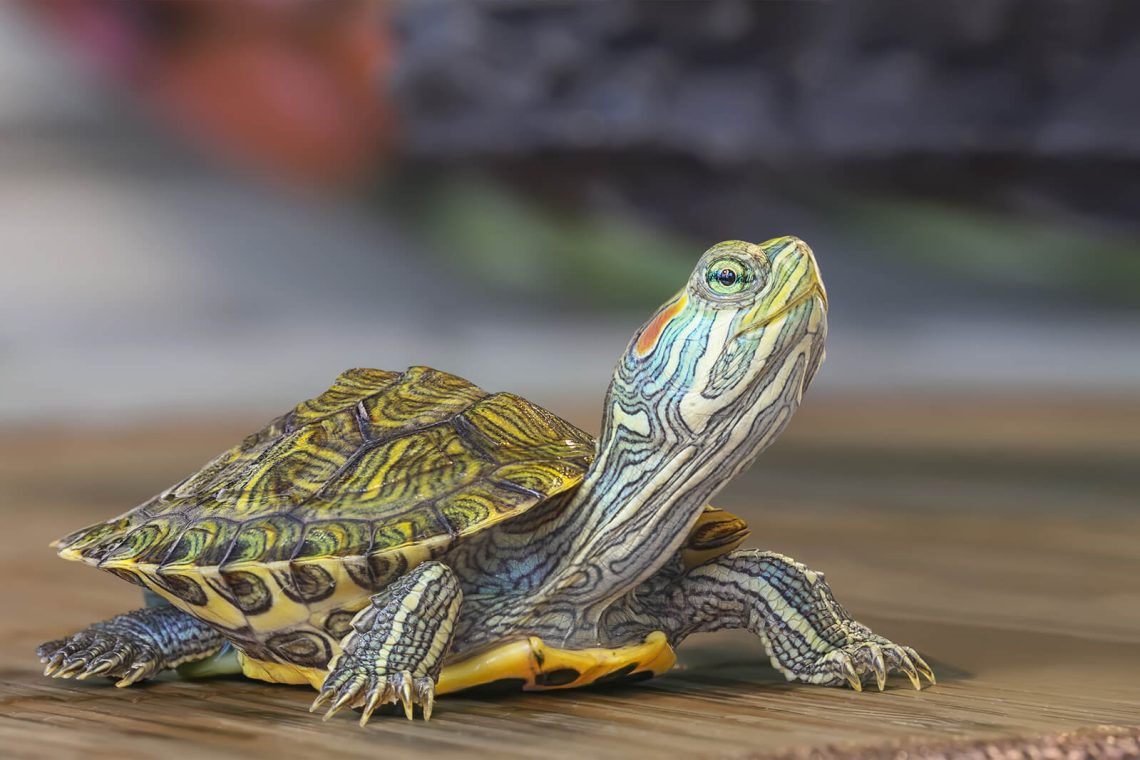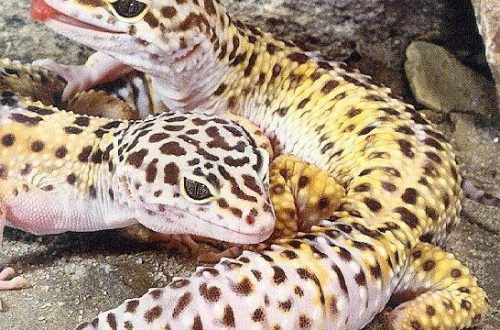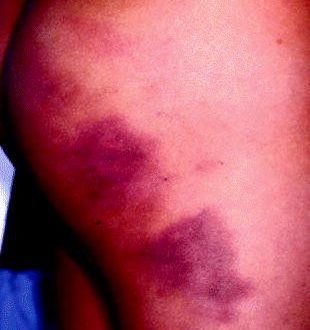
How to understand by appearance that your turtle is sick.
If a turtle has settled in your house, then you need to remember that we are responsible for those we have tamed.
In order to provide a new pet with comfortable living conditions, it is necessary to take care of creating the right conditions for keeping and feeding it (preferably even before buying a reptile), since most of all diseases have an underlying cause just in this.
As important as it is to carefully examine the animal when buying, it is just as important to observe its condition throughout life. To do this, let us dwell on some points of the first symptoms of the disease of the tortoise.
An important indicator and mirror of health is the shell of a turtle. It should be even and firm. If you see a curvature, disproportionate growth, then this is due to a lack of vitamin D3 and calcium and, as a result, metabolic bone disease, in particular rickets. Different zones of the carapace grow at different rates, and besides, the carapace is attached to the axial skeleton, the growth of which can also be reflected in the deformities of the carapace. Development can be accelerated or slowed down depending on the conditions of feeding and maintenance. With slow growth, as a rule, there is a lack of any substances in the diet, including vegetable or animal protein (depending on the turtle’s diet). Increased growth is dangerous because it requires an increased content of nutrients and minerals, and if they are lacking, the shell and bones of the skeleton will be fragile, subject to rachitic changes.
Usually existing deformities cannot be cured, but further abnormal development can be prevented. To do this, a sufficient amount of dressing containing vitamins and minerals is introduced into the diet, the conditions of detention are improved (the presence of an ultraviolet lamp and a place for heating is especially important).
Often, the curvatures of the shell are so strong that they impede the work of internal organs, the curving edges of the shell interfere with the movement of the limbs and injure them. One gets the impression that the shell is small for a turtle. With uneven growth of the bones of the shell, cracks can even form.
Another horny “process” – an indicator of health – is the “beak” (ramfoteki). Often (mainly with hypovitaminosis A and the absence of roughage in the diet), its excessive growth is observed, with a lack of calcium, malocclusion may occur. All this prevents the turtle from eating. As a preventive measure, again – mineral and vitamin supplements, ultraviolet irradiation. Unfortunately, the already regrown beak will not disappear by itself, it is better to cut it off. If you do not have experience in this, the first time a specialist will show you how it is done. In addition to ramphotecs, tortoises may have rapid growth of claws that will need to be trimmed periodically. Unlike terrestrial turtles, male red-eared turtles have to grow claws on their front paws, this is their secondary sexual characteristic.
In addition to deformations, the shell may lose its hardness. With a lack of calcium in the body, it is washed out of the shell and it becomes soft. If the plates are pressed under the fingers or the turtle, with its size, feels too light with a kind of “plastic” shell, then treatment is urgent. Most likely, the situation cannot be corrected by feeding alone, calcium injections are required, additional giving of calcium-containing preparations (for example, Calcium D3 Nycomed Forte) for a certain period, usually prescribed by a veterinarian. And again, no treatment will make sense without first adjusting the conditions in which the turtle is kept.
Prolonged lack of calcium leads to disturbances in other body systems. For example, blood clotting decreases and spontaneous bleeding from the cloaca, mouth, accumulation of blood under the shell shields can be observed. The work of the gastrointestinal tract, kidneys, lungs, heart is disrupted. If you notice a bloody fluid under the plates, swollen joints or limbs completely, trembling of the paws – this is a signal to immediately consult a doctor.
What else can be seen on the shell and skin of a turtle? Ulcers, areas of necrosis, delamination of plates, weeping areas may appear on the shell. In aquatic species, a cobweb-like coating, prolonged molting, can be observed on the skin. Skin problems are mostly caused by bacteria or fungi or their working together. Predisposing factors are dirty conditions, low temperatures, improper selection of humidity, the wrong diet and stress. As a rule, both bacterial and fungal microflora are present in the foci of dermatitis; it is possible to say exactly what exactly caused the disease after a laboratory study. If the causative agent of the disease is not identified, then it is necessary to treat with complex preparations. These are antimicrobial and antifungal ointments that are applied to the affected area. At the same time, water turtles are left in a dry place for some time so that the drug can penetrate the tissue. In more severe cases, you may need antibiotic therapy, oral antifungal drugs. But this is decided by the doctor after examining the patient.
Another common problem owners face is swelling and inflammation of their pet’s eyelids. Usually this condition is associated with a lack of vitamin A and is solved by injections of the prescribed vitamin complex, washing the eyes and instilling eye drops into them. However, there are injuries and burns of the cornea due to ultraviolet and heating lamps placed too low.
In aquatic turtles, malaise is often identified by their behavior in the water. A list on one side, difficulties in diving and ascent, reluctance to go down into the water should alert you. Most often, roll and increased buoyancy are associated with bloating of the stomach or intestines (all from the same lack of calcium, heating, ultraviolet radiation). Often at the same time, the turtle has a discharge from the nose or mouth (since the contents of the stomach are thrown into the upper sections). But all this must be distinguished from inflammation of the lungs (pneumonia), in which there are also discharges, difficulty breathing and heeling. Often, the only way to determine the disease is an x-ray or analysis of mucus from the oral cavity. Both diseases require treatment. With pneumonia, antibiotic therapy is mandatory, and with tympania, calcium injections and giving Espumizan with a probe. The techniques for injecting and giving the drug with a probe are not so simple, it is desirable that they be done by a specialist. In extreme cases, for self-fulfillment, they need to be seen at least once.
In land turtles, pneumonia is expressed in difficulty breathing, the turtle inhales and exhales with a sound (whistle, squeak), stretches its neck, and discharges from the nose and mouth are observed. With tympania, along with secretions, one can notice the “bulging” of the body from under the shell, since the body cavity is occupied by a swollen intestine or stomach. This happens with excessive feeding with sugar-containing fruits, grapes, cucumbers, with a small amount of fiber.
With a lack of calcium in the body, with hypovitaminosis, trauma, constipation, prolapse of various organs of the cloaca (intestine, bladder, organs of the reproductive system) can often occur. Treatment requires, first of all, an assessment of which organ has fallen out and what is the condition of the tissues (whether there is necrosis – necrosis). And in the future, either the organ is reduced, or the dead area is removed. So do not wait for necrosis and immediately contact a specialist, the less time has passed since the loss, the greater the chance to do without surgical intervention. Often, owners confuse the loss with the sexual behavior of males, when the genitals can be observed. If the male himself easily removes it into the cloaca, then there is no need to worry.
Another common, and, unfortunately, solved only surgically, problem is purulent otitis media. The root cause lies most likely in the same hypovitaminosis A, lack of heating and ultraviolet radiation. Often, owners of red-eared turtles are treated with the fact that “tumors” have formed on one or both sides of the head. As a rule, it is purulent unilateral or bilateral otitis media. Since any abscess in reptiles is surrounded by a dense capsule, and the pus itself has a curdled consistency, it will not be possible to “pump out” it. The doctor will open, remove the pus and wash the cavity, after which he will prescribe antibiotic therapy. The turtle will have to live without water for some time after the operation.
It is also necessary to regularly monitor the presence and “condition” of urine and feces. An unpleasant smell, an unusual color, a long absence of these secretions should make you take care of going to the veterinarian. Urine in reptiles, like in birds, contains uric acid crystals, so it can turn white.
Closely monitor the behavior of the turtle, as the first signs of the disease can be expressed in the refusal of food, apathy. During the period of sexual behavior, the turtle tends to lose its appetite for a while, while becoming more active and even aggressive (many males). Females also refuse to eat before laying eggs, show anxiety and look for a place to lay eggs.
This is not a complete list, but as you have already seen, the treatment of such animals is as specific as the animals themselves. So, without special knowledge and experience, without the “instructions” of a herpetologist, it is better not to take on self-treatment. But it shouldn’t be delayed either. If something has alerted you in the behavior and external manifestations of the pet, find a specialist who can help.





